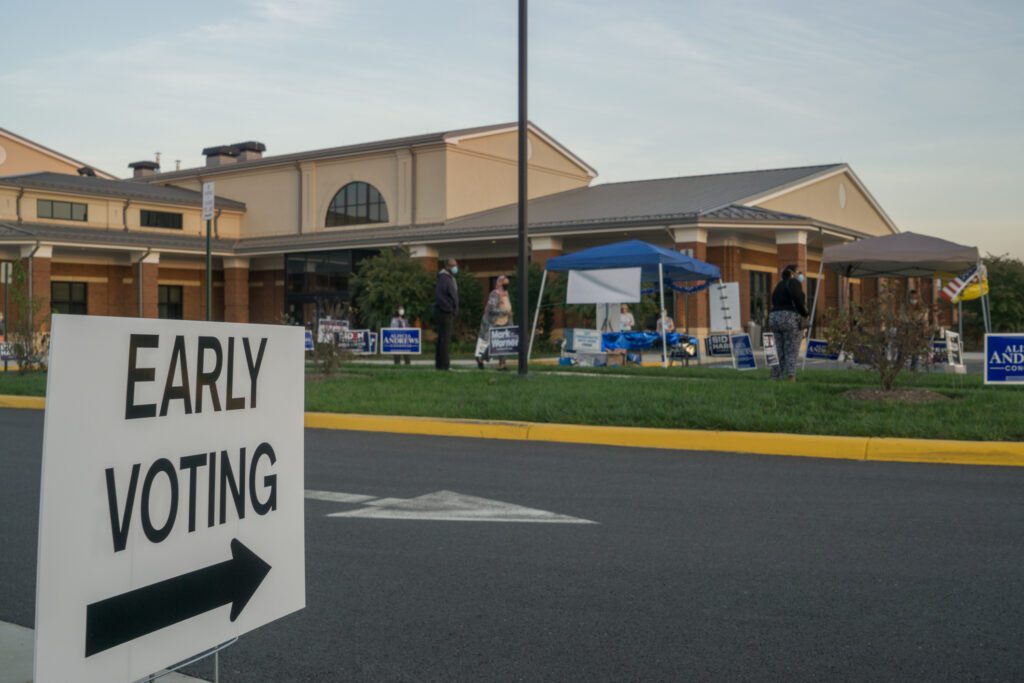What Political Pros Will Be Watching in the 2021 Elections
For many orgs and vendors, Virginia will provide a chance to test new or different voter-turnout models and mechanisms. For others, it’s an opportunity to build donor, supporter and volunteer lists for 2022 and beyond.


Image Credit: XiFotos
Off-off-year elections are an afterthought for many voters, but a valuable data point for political professionals. And of course, this year’s results in Virginia and New Jersey will set the direction of politics and public policy in their states in a redistricting year.
Pundits are surely warming up their keyboards and testing their microphones, preparing to analyze the results ad nauseum, though too few will look beyond the top-line vote totals in either state. As Slate’s Jim Newell notes, we should be prepared for “Democrats are doomed” narratives if the party’s gubernatorial nominee Terry McAuliffe loses by one vote. Likewise, watch for “Democrats are killing it” stories if he wins by the same margin.
Political professionals and savvy journalists will be digging into numbers beyond the raw win/loss statistics. They’ll pay particular attention to Virginia, since New Jersey’s 2021 elections show no signs of upsetting the political applecart. Polls in the Commonwealth have been close by contrast. Though they’re looking better for Democrats than a few weeks ago, the governor’s race still seems tight, and the party is defending a narrow margin in the state assembly. They could lose other statewide offices if Republicans surge.
With so much on the line, including the media narrative going into next year’s midterms, both sides have poured resources into voter turnout. For many organizations and vendors, Virginia will provide a chance to test new or different voter-turnout models and mechanisms. For others, this year’s elections are an opportunity to build donor, supporter and volunteer lists for 2022 and beyond. For the rest of us, they’re a chance to steal ideas from other people’s work.
Let’s examine a few areas of particular concern for those whose business it is to plan campaigns.
What’s Up With Trump Voters?
Even out of office, Donald Trump still holds a uniquely powerful grip on the minds of many of his supporters. Democrats won solid victories in Virginia in 2017 and ’19, and with the name “Trump” absent from the ballot, how many of his diehards will decide to sit this one out too? If so, why?
Disinterest in elections that don’t feature their guy? Loss of faith in voting and the political process, perhaps driven by endless claims of election fraud from Trump himself? Lack of trust in the Republican candidates they’re asked to vote for? If they do show up in big numbers, what motivated them? And, can Republican campaigns bottle the formula for 2022?
Whither the Suburbs?
As Republican candidates fire up the true believers, they risk alienating the suburban and exurban voters who soured on the party in the Trump years. Many former Republicans might be happy to go back to their political home, but when Marjorie Taylor Greene opens her mouth, they’ll have a hard time forgetting what pushed them out in the first place. Digital targeting can help deliver the red meat messaging to people likely to devour it, but attack ads and media coverage will make it tough to keep the information streams separate. In practice, neither side can escape the wider political context, for better or worse.
For example, women voters have driven most of the change in suburban voting since 2016. How much might an issue like Texas’s new abortion law push them to the polls? Or, could Republican “parental control” messaging around the pandemic and school curricula end up working instead? Media consultants and campaign managers will be watching.
Loving the Low-Propensity Voter
Many candidates talk about mobilizing voters alienated from the political process, but relatively few pull it off in practice. People who don’t vote regularly aren’t easy to turn out in the first place, and candidates who can motivate them in large numbers come along rarely. Barack Obama managed it in 2008 and 2012, as did Trump in 2016 and 2020, and either side could be the beneficiary this year — at least in theory.
But despite investing time and money in data-driven turnout operations, Democrats struggled to turn out their low-propensity voters in electoral off years like 2010 and 2014. Will the same pattern hold for Republicans in 2021? If either side can persuade its tougher targets to go to the polls, what can 2022 campaigns learn from their experience? What messaging mattered, and which outreach strategies worked on the ground?
The Wrong Tea Leaves?
These questions are just the start, of course, and campaign professionals will pore through the voter-turnout crosstabs for more. Meanwhile, I suspect that many in the pundit class will actually read too much into 2021’s tea leaves, forgetting that the political reality will almost surely be very different in 12 months.
The course of the pandemic will likely matter much more to voters than any particular political message, and the field will look completely different if it either subsides or surges again. Next year’s campaigners can still learn a lot from this year’s campaigns, but I doubt they can find out what corona has in mind for us all. In times like these, no campaign’s destiny is truly in its own hands — no matter how much data we parse.
Colin Delany is founder and editor of the award-winning website Epolitics.com, author of the 2021 edition of “How to Use the Internet to Change the World – and Win Elections,” a twenty-five-year veteran of online politics and a perpetual skeptic. See something interesting? Send him a pitch at cpd@epolitics.com.
